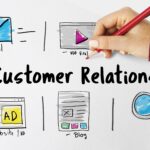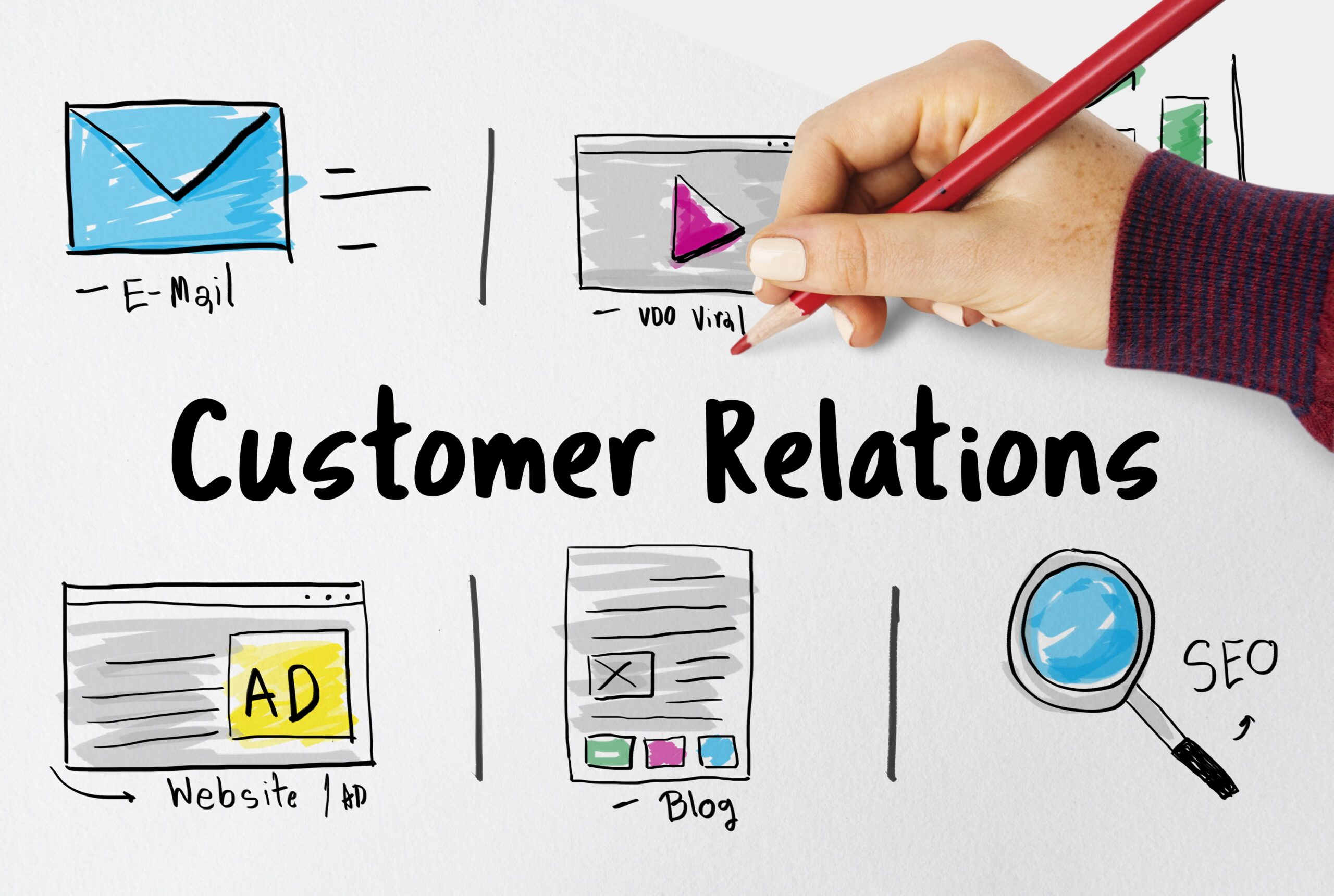Revamping Sales: Email Marketing for Online Marketplaces
Email marketing for online marketplaces is no easy feat.
In fact, when it comes to scaling and enhancing their reach, the primary hurdle many businesses face is mastering this aspect of digital marketing.
Email marketing isn’t just about sending out newsletters or promotional offers. It’s an art that separates successful online marketplaces from those struggling to retain customers and drive sales.
If you’re not leveraging email marketing effectively in your marketplace strategy, chances are you’re missing out on significant growth opportunities. Without a robust and well-executed email marketing plan, reaching new heights can be challenging.
Table of Contents:
- Understanding the Role of Email Marketing in Online Marketplaces
- Crafting Effective Email Campaigns for Marketplaces
- Unleashing the Power of Segmentation and Personalization in Marketplace Email Marketing
- The Power of Transactional Emails in Online Marketplaces
- Prioritizing Supply Build-Up First
- Automating Your Marketplace’s Email Marketing Efforts
- Audience Segmentation: The Key to Personalization
- Conclusion
- FAQs in Relation to Email Marketing for Online Marketplaces
Understanding the Role of Email Marketing in Online Marketplaces
Email marketing is a potent tool for online marketplaces. It plays an integral role not only in establishing brand awareness but also propelling sales and ensuring customer retention.
The Impact of Email Marketing on Customer Retention and Sales
How does email marketing fortify customer loyalty within ecommerce businesses? The answer lies in well-crafted messages that land directly into your customers’ inbox, keeping them engaged with your brand over time.
Apart from fostering customer loyalty, effective email marketing strategies drive sales within online marketplaces. Offering exclusive deals or personalized product recommendations via emails delivers added value that motivates purchases.
Furthermore, targeted email campaigns open up opportunities for upselling and cross-selling products based on past purchase history or browsing behavior. This level of personalization often results in increased average order values while enriching the overall shopping experience for each consumer.
Building a Robust Email List for Your Marketplace
To fully harness the power of email marketing, you must begin by building a robust list of subscribers – potential customers who express interest by signing up voluntarily through various channels like website pop-ups or checkout forms. Creating a successful email list isn’t only about having access to prospective customers; it also provides you with useful information on what they desire and like. It’s also your key to unlocking invaluable insights into their needs and preferences.
Using Lead Magnets to Grow Your Email List
If you’re looking to attract more subscribers effectively, consider using lead magnets as incentives. These are valuable offerings provided free-of-charge such as ebooks, discount codes or access to exclusive content which can inspire individuals to sign-up onto your mailing list.
Potential customers perceive these offers as high-value propositions making them more likely to share their contact information willingly – thus growing your subscriber base exponentially without seeming intrusive. However remember; any lead magnet should align closely with what you sell so it attracts relevant prospects genuinely interested in your marketplace offerings.
The art of growing your subscriber base revolves around leveraging lead magnets effectively. This involves offering something that resonates with visitors’ interests in return for their contact information.
“The most successful online marketplaces are those who offer educational content as lead magnets. An exclusive report or guide related to the industry can be highly appealing.”
– Anonymous Online Marketing Expert
A shining example of this strategy comes from HubSpot’s blog post, which demonstrates how blogging can serve as an impressive tool for generating leads when executed correctly.
Key Takeaway:
Don’t underestimate the power of email marketing in online marketplaces. It’s a game-changer for brand awareness, customer loyalty, and sales boost. To fully exploit this tool, build a robust list of subscribers using attractive lead magnets like free ebooks or exclusive content. Remember to craft personalized emails with irresistible deals based on customers’ purchase history – it not only ups your
Coupons and Discounts: A Tried-and-True Method
No one can resist a good deal. Coupons and discounts have long been established forms of lead magnets that prompt people to join mailing lists. Offering these incentives not only boosts sign-ups but fosters trust and engagement among new subscribers right off the bat.
- Educational resources such as e-books or whitepapers
- Free trials
- Webinars
- Contests
Each magnet must deliver genuine value while aligning with both the potential customer’s interests and what your marketplace offers.

Crafting Effective Email Campaigns for Marketplaces
The task doesn’t end at building an email list using strategic lead magnets; there lies another challenge ahead – designing promotional emails tailored specifically towards different segments within your audience group.
Key Takeaway:
Revving up sales in online marketplaces is all about mastering email marketing. From building a robust list of potential customers to leveraging lead magnets like educational content, coupons and discounts – it’s the golden ticket to understanding your audience better. And remember, once you’ve got that killer list, tailor those promotional emails to each segment for maximum impact.
The success of your e-commerce platform may hinge on the effectiveness and excellence of your email promotions. When done correctly, these campaigns engage customers, encourage interaction with your platform, and ultimately drive sales.
Creating Compelling Promotional Emails
Promotional emails are a crucial part of any e-commerce marketing strategy. They provide valuable information about new products or services available in your marketplace, special deals that are currently running, or upcoming events to look forward to.
“However, it’s important not to overwhelm recipients with too much promotional content, which could end up feeling like spam.”
To avoid this pitfall while significantly increasing engagement rates, consider personalizing each promotional email based on user behavior and preferences. For instance, if a customer has shown interest in vintage clothing items, tailor their promotions accordingly to make them feel valued and understood.
Fostering Engagement through Tailored Content
Beyond simply promoting products, there is another type of communication – engagement emails. These emails aim not only to push sales but also to build relationships between you as a marketplace operator and your users.
“Engagement emails often share valuable tips for using the platform effectively or industry news relevant to buyers’ interests.”
This helps establish credibility and trust among your readership, leading to higher conversion rates over time. Furthermore, integrating elements such as social proof and testimonials within the body copy enhances the likelihood of conversions even further, due to the increased perceived value and authenticity associated with your brand and product offerings.
Making Your Email Stand Out Amidst Digital Noise
In today’s digital age, where people receive numerous emails daily, standing out becomes an increasingly challenging yet crucial task. It is essential to undertake this task successfully every single time you send out communications to your target audience, regardless of the purpose they serve. Whether it is purely informational or transactional, the underlying intent is the same – how to make your email stand out amidst all the noise?
Start by making sure every bit of your subject line and preview is spot on.
Key Takeaway:
For a thriving online marketplace, master the art of email campaigns. Use promotional emails wisely to inform customers about deals without bombarding them – personalization is key here. Engagement emails build rapport and trust with users by sharing useful tips or industry news. And remember, amidst the digital chatter, your email needs to be a symphony – nail that subject line and preview.

Unleashing the Power of Segmentation and Personalization in Marketplace Email Marketing
Email marketing for online marketplaces is no small feat. With diverse user bases, it’s all too easy to make the mistake of sending identical emails to potential providers and customers alike. This approach overlooks a crucial fact: these two groups have distinct needs and interests.
“To create impactful email campaigns, understanding your audience is paramount.”
Dynamic Content: A Key Ingredient for Success
The strategy that separates successful marketers from their peers involves leveraging dynamic content specifically tailored to each segment within their target audience. This entails customizing aspects within an email based on individual recipient data or preferences.
A marketplace offering freelance services might send out emails featuring popular graphic design gigs to subscribers who’ve previously shown interest in such services. Conversely, information about top-rated freelancers specializing in coding or web development projects would be sent to those looking for tech-related solutions.
Buyer Persona: The Blueprint For Your Target Audience
To craft effective dynamic content, one must first develop a well-defined buyer persona. A buyer persona encapsulates your ideal customer – their motivations, behavior patterns, and decision-making processes.
This aids not only in identifying key segments among users but also enables more effectively tailored messages, thereby boosting engagement rates significantly.
Email List Segmentation: The Route To Maximized Effectiveness
An essential part of any successful email marketing campaign involves dividing up subscriber lists into smaller subsets, which allows greater personalization leading towards maximizing effectiveness.

The Power of Transactional Emails in Online Marketplaces
In today’s digital landscape, every interaction counts. Transactional emails are emerging as powerful marketing tools that not only communicate essential information but also engage customers and drive sales.
The Hidden Powerhouse: Abandoned Cart Emails
Imagine this scenario: an online shopper fills up their cart with items they intend to purchase but then abandons it before checking out. Many online stores miss out on significant income due to shoppers leaving their carts without completing the checkout process, which happens more frequently than expected.
“Abandoned cart emails can serve as gentle nudges that bring shoppers back to complete their purchases.”
– Anonymous eCommerce Expert
This is why abandoned cart emails are so valuable; they act as reminders that coax shoppers back towards potential purchases. The key here is creating engaging and personalized content that resonates with your customers’ interests while promoting your marketplace offerings.
Morphing Transactional Emails into Sales Pitches
Beyond serving as mere notifications or confirmations, transactional emails offer opportunities for subtle yet effective selling pitches. They provide an avenue not only for confirming orders or tracking shipping details but also showcasing related products or services based on the buyer’s past behavior.
“Transactional email spaces could be creatively utilized by suggesting complementary items available on your site.”
– Noted Digital Marketing Strategist
A strategic approach is required when leveraging these interactions – one must avoid appearing overly pushy or intrusive while providing meaningful suggestions that may interest buyers.

Prioritizing Supply Build-Up First
When you’re thinking about using transactional emails, start by building up your online marketplace supply. Make sure there’s plenty of choices for users before you kick off any big promotional campaigns through these emails. According to Marketplace Platform, this approach gives platforms enough room to grow.
Key Takeaway:
Don’t just view transactional emails as order confirmations. These are hidden gems for your online marketplace, acting as subtle sales pitches that drive customer engagement and boost revenue. To maximize their potential, create personalized content based on past buyer behavior, suggest complementary items without being pushy, and ensure a robust supply before kicking off any promotional campaigns.
Maximizing Customer Engagement through Marketplace Email Marketing
Email marketing, when done right, can turn your online marketplace into a hub of customer engagement. It’s about creating content that resonates with your audience while effectively promoting your offerings.
Crafting Engaging Newsletters
The secret to fostering connections and driving conversions lies in the heart of an engaging email newsletter. The aim isn’t just to spread news but also to offer value by matching your customers’ needs.
To achieve this, personalize your content based on user behavior or preferences. By integrating personalized product recommendations into newsletters, you can increase click-through rates and sales. In short, relevance equals attention in an inbox full of distractions.
Social Media Tie-ins
Your email newsletters are not standalone pieces; they can also amplify your social media efforts. This means incorporating relevant blog posts shared on platforms like Facebook or Twitter, trending hashtags related to your offerings, or even featuring user-generated Instagram content.
This two-fold approach helps reinforce your brand messaging across channels and encourages recipients to engage beyond their inbox, potentially expanding your reach and influence.

Automating Your Marketplace’s Email Marketing Efforts
Moving towards efficiency requires automating certain parts of your email marketing strategy using trusted software solutions such as Mailchimp, DirectIQ, and Constant Contact. However, remember that automation should not mean neglecting personal touch points. These tools come equipped with advanced segmentation capabilities, allowing targeted communication tailored specifically for various segments within your mailing list.
The landscape of email marketing has been revolutionized by automation tools provided by platforms like Mailchimp, DirectIQ, and Constant Contact. These game-changers have brought a new level of efficiency to the way online marketplaces handle their email campaigns.
Choosing the Right Automation Tool
Selecting an appropriate platform for your marketplace isn’t just about picking one out of a hat; it requires careful consideration. You’ll need to evaluate user-friendliness, scalability, cost-effectiveness, and integration capabilities when comparing popular options such as Mailchimp and DirectIQ.
“Each tool comes with its unique strengths: For instance, if you’re looking for advanced segmentation features that allow you to personalize automated emails in your list – DirectIQ is what you should be eyeing.”
It also offers a vast library of pre-designed templates which can simplify creating professional-looking emails significantly.
Email List Segmentation Tools Provided by these Platforms
List segmentation is no longer optional but rather critical in targeting customers effectively based on factors such as demographics or purchasing behavior. This strategy ensures sending tailored content to each segment, thereby improving engagement rates.
- All three providers – Mailchimp, DirectIQ, and Constant Contact offer sophisticated tools allowing easy division into distinct segments.
- You can then design personalized messages, ensuring every recipient gets relevant information through your automated emails.
- This enhances the overall communication strategy, leading to improved conversion rates.
The Significance of Open Rates & Conversion Rates
‘Open rates’, one such critical metric, denote the percentage of recipients who actually open your emails. If these numbers are high, it means that your subject lines are intriguing enough to capture user attention effectively.
To gain deeper insights into ‘open rates’, tools like DirectIQ can be leveraged. As a comprehensive email marketing service, DirectIQ provides detailed reports which help marketers identify patterns over time and comprehend what types of content or subject lines outperform others.
Moving on from opens to actions – ‘conversion rates’. These figures represent how many people took desired action after opening an email; be it making a purchase, signing up for a trial or clicking through for more information on your website. High conversion rates demonstrate that not only was the reader interested in going through your message but also found it convincing enough to act upon.
To accurately track conversions linked with each campaign, Google Analytics can prove beneficial when integrated with DirectIQ. Such combinations enable marketers to trace every successful sale or sign-up directly back to their targeted emails, thereby providing robust analytics about conversions per campaign.
Email Metrics: Beyond Opens And Conversions
Beyond ‘open’ and ‘conversion’ rates, there exist other vital email analytics:
- Campaign bounce rate: Reflects the percentage of undeliverable messages due to either invalid addresses (hard bounces) or temporary issues like a full inbox (soft bounces).
- List growth rate: Indicates the speed at which new subscribers are being added compared to those unsubscribing or bouncing off.
- Email sharing/forwarding rate: This offers insight into the frequency readers share/forward emails to others, revealing viral potential.
Key Takeaway:
Don’t just wing it with your email marketing – use the numbers. Tools like DirectIQ and Google Analytics can help you track key metrics such as open rates, conversion rates, bounce rates, list growth rate, and sharing/forwarding rate. These stats aren’t just pretty figures; they’re a roadmap to what’s working in your campaigns and where there’s room

Audience Segmentation: The Key to Personalization
One can’t underestimate the power of audience segmentation in email marketing. This practice involves categorizing your subscribers based on various factors like interests, behaviors, or demographics. By utilizing audience segmentation, you can craft emails specifically designed to meet the needs and desires of each group.
The results speak for themselves – segmented campaigns have shown a substantial increase in open rates compared to their non-segmented counterparts. In essence, this approach enhances user engagement while driving more conversions.
Crafting Content that Resonates
Your content should not only be informative but also engaging enough to capture the attention of recipients immediately. A well-crafted subject line can make all the difference as it’s what users see first when they receive an email from you.
Incorporating actionable language within your emails such as “Buy Now,” “Sign Up,” or “Learn More” encourages readers towards conversion-oriented actions which are key in fostering long-term loyalty among them.
The Power of A/B Testing
A/B testing proves invaluable in successful marketplace email marketing. It allows marketers to compare two versions (A & B) of an email by sending them out separately. This technique helps identify what resonates best with target audiences, thereby increasing overall campaign effectiveness.
Finding Balance between Regularity and Overload
- Sending regular emails keeps subscribers engaged without compromising brand recall. However, it becomes counterproductive if one overloads recipients, potentially leading to being marked as spam. Balance is crucial here; staying connected yet not overwhelming subscribers is essential.
- Analyzing Performance Metrics
- Meticulous analysis leads to improvementChecking out stuff like click-through rates (CTR), bounce rate, and unsubscribe rate can give you a real good idea of how your campaign’s doing. These numbers let you see if your message is hitting home.
Key Takeaway:
Don’t underestimate the power of segmentation in email marketing. Tailoring your emails to different groups can skyrocket open rates and conversions. Crafting engaging content, using actionable language, and conducting A/B testing are crucial for effectiveness. Regular but non-overwhelming communication is key, while performance metrics provide valuable insights.
Conclusion
It’s a game-changer.
You’ve learned about its pivotal role in customer retention, sales enhancement, and brand awareness. A well-executed strategy can skyrocket your success.
The key lies in building an effective email list using irresistible lead magnets that draw potential customers like bees to honey.
Crafting compelling campaigns tailored to your audience’s needs takes skill, but it reaps rewards. Personalization and segmentation are vital components that should not be overlooked.
Transactional emails also hold immense potential when used strategically. They can engage customers on another level while subtly pushing sales up the ladder.
A focus on maximizing customer engagement through newsletters and social media tie-ins can do wonders for maintaining interest levels high over time. And automation? That’s just icing on the cake!
Finally, tracking and analyzing performance helps fine-tune strategies for maximum impact.
With all this knowledge at hand, you’re now equipped with best practices to drive user engagement, increase conversions, foster long-term loyalty among users – all via email marketing.
Now imagine having a tool that simplifies this entire process!
Meet DirectIQ
FAQs in Relation to Email Marketing for Online Marketplaces
How to do email marketing for eCommerce?
Email marketing for eCommerce involves building a subscriber list, segmenting your audience, crafting engaging emails and newsletters, using automation tools, and tracking metrics to improve campaigns.
Is email marketing good for eCommerce?
Absolutely. Email marketing can boost customer retention, increase sales conversions, and enhance brand awareness in the highly competitive world of ecommerce.
How do I promote my online marketplace?
Promote your online marketplace through SEO-optimized content on blogs or social media platforms, targeted PPC ads, influencer partnerships, as well as effective email marketing strategies.
What is email marketing in online marketing?
Email Marketing is a component of digital strategy that uses electronic mail to promote products or services while nurturing relationships with potential customers or clients.












